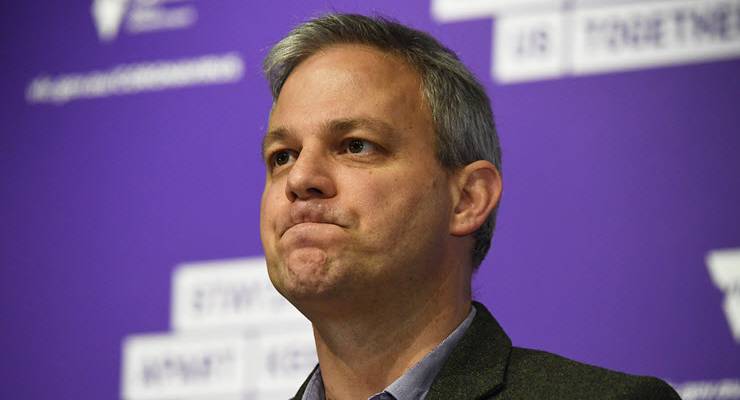
New record and restrictions
On Wednesday, new cases in Victoria fell under 300, leading to optimistic speculation the state had passed its peak.
Today, Victoria recorded a staggering 723 new cases and 13 new deaths, by far the worst numbers we’ve seen in Australia during the pandemic. In response, the Andrew government has extended mandatory mask wearing to all regions of the state and banned home visits in the six regional areas of Greater Geelong, the Surf Coast, Moorabool, Golden Plains and the Borough of Queenscliffe. Wedding and funerals have been banned in those areas too.
NSW, meanwhile, continues to see enough low-level community transmission for health officials to describe the situation as “on a knife edge” (a knife’s edge we’ve been on for weeks, it seems). As yet, there’s been no rapid escalation in case numbers. There were 18 new cases in NSW overnight.
According to analysis by The Sydney Morning Herald, Victoria and NSW both followed similar trajectories for the first 10 days of their local infection spikes. But between days 10 and 16, Victoria’s new infections tripled, while they increased just 60% in NSW.
Why the different outcomes? Luck played a part — the NSW spikes weren’t in high density public housing or family clusters. NSW also got off to a better start, as more reports suggest Victoria’s public health and contact tracing infrastructure was under-resourced and ill-prepared.
There is no wave, WHO says
We still haven’t worked out what to call new spikes in COVID-19 cases. Now, to add a bit more confusion, the World Health Organization is throwing cold water on “second wave”.
“It’s going to be one big wave,” WHO spokesperson Margaret Harris said.
“It’s going to go up and down a bit. The best thing is to flatten it and turn it into something lapping at your feet.”
From a global standpoint, we’re still experiencing one single outbreak. And while in certain areas (like Victoria) the situation does seem to have characteristics of a second wave, it isn’t a term liked by epidemiologists, because it implies a seasonal variation akin to influenza.
The first five days matter
A new study by European researchers synthesising the current science on COVID-19 confirms that people with the virus are most infectious in the first five days after getting infected. While people who are infected have high viral loads by day nine, they tend to not be infectious after this point. The research also suggested a relationship between age and infectivity — people who were older and sicker tended to shed viral load more.
The study re-emphasises the need to act quickly — test early, isolate early, stay safe.
Virus hits Mumbai’s slums
A month ago, international headlines were calling Dharavi, a slum in Mumbai that is the largest in Asia, a success story. But a report this week suggests more than half of people living in Mumbai’s slums had COVID-19 antibodies, casting doubt on India’s official virus figures.
While India now has more than 1.5 million cases of the virus, Prime Minister Narendra Modi claims it is doing better than other countries. But such a high case load, after Modi put the country into one of the world’s harshest lockdowns, is far from good news. And with a poor testing regime, struggling public health infrastructure, and an economy that had been tanking well before the virus hit, that optimism may be misplaced.








Hands up anyone who believes figures from India, China, Brazil or the US/UK?
No point even querying numbers in Africa but, hey, an excellent result in the Land of the Morning Calm, only one infection.
Yay for dictatorship?
Or Indonesia, Agni.
But all our numbers might be off by a factor of 10, or less or more dependent on testing regimes and accuracy of tests and figures. No room for complacency here.
We should all remember that when we had our foot on the throat of the virus across Australia, when eradication became a real possibility, there were many politicians (let’s face it, exclusively from the right) and business leaders (cough) advocating strongly for re-opening the economy sooner. The current predicament in Australia is testimony to why we should have gone for eradication. Our lack of will and clarity of focus, for fear of economic damage has now seen much greater economic damage.
Bill Bowtell, Raina McIntyre and later Norman Swan have advocated for eradication. Peter Collignon, eminent scientist that he is, thinks eradication is, or may be, impossible. He may prove to be right, but we should have tried, and we should still try if we can get on top of Vic and NSW numbers.
I don’t want to live like this for 2 or 3 years, the best timeline for a vaccine, or possibly forever if we don’t get one. Eradication is our best hope, the social fabric will tear long before the 2 or 3 years anyway.